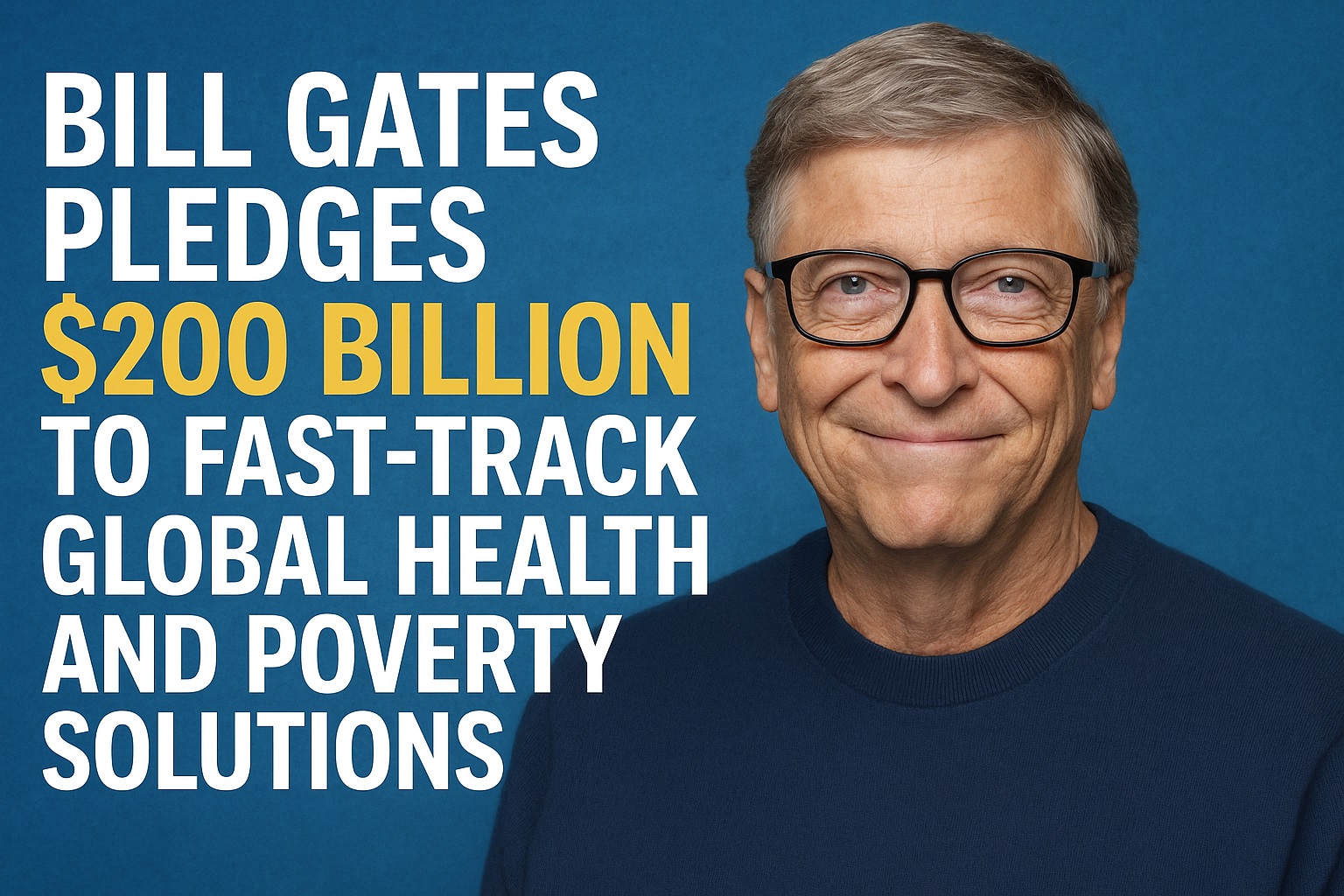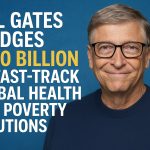Microsoft co-founder and philanthropist Bill Gates unveiled a dramatic acceleration of his charitable giving strategy this week, announcing plans to distribute nearly his entire fortune—approximately $200 billion—over the next two decades through the Bill & Melinda Gates Foundation before winding down its operations at the end of 2045
Gates, whose current net worth stands at roughly $108 billion according to Bloomberg’s Billionaires Index, has already directed more than $100 billion to global health, development, and education initiatives since establishing the foundation in 2000. The new commitment represents what the Gates Foundation termed “the largest philanthropic pledge in modern history,” reflecting the urgency Gates sees in addressing persistent global challenges such as infectious diseases, maternal and child mortality, and extreme poverty.
“I have pledged to give away 99% of my wealth before I die,” Gates declared in a blog post published on May 8. “People will say a lot of things about me when I die, but I am determined that ‘he died rich’ will not be one of them.” This marks a notable shift from the foundation’s original blueprint, which envisioned its endowment continuing to fund projects for decades beyond the founders’ lifetimes.
According to foundation documents, the organization’s endowment currently stands at $77 billion, supplemented by Gates’s personal assets and future investment earnings from ventures such as TerraPower, the next-generation nuclear power company he founded. Gates indicated that both sources would fuel the $200 billion-plus distribution target. As of today, the foundation’s grants support programs combating malaria, tuberculosis, polio, and other infectious diseases, as well as improving maternal health and expanding educational opportunities in low-income countries.
In outlining his rationale, Gates cited stagnant progress in global health metrics and recent reductions in international aid budgets by several governments. He specifically criticized Elon Musk’s recent tenure at the U.S. Department of Government Efficiency, accusing him of “killing the world’s poorest children” by dismantling crucial foreign aid mechanisms. The comments, made in an interview with the Financial Times, underscore Gates’s frustration with policy shifts that he fears will undermine decades of gains in disease prevention and education access.
The foundation has identified three core objectives for its intensified giving plan: ending preventable deaths among mothers and infants, eradicating deadly infectious diseases, and lifting hundreds of millions out of extreme poverty. Gates suggested that breakthroughs in artificial intelligence and other technologies could accelerate these goals when combined with robust financial support.
The announcement comes as Microsoft celebrated its 50th anniversary, prompting Gates to reflect on the source of his wealth. “It feels right that I celebrate the milestone by committing to give away the resources I earned through the company,” he wrote. Although he stepped down as CEO in 2000 and relinquished the chairmanship in 2014, Gates has maintained an active role in directing the foundation’s strategy and remains a significant shareholder in Microsoft.
Gates’s ex-wife, Melinda French Gates, who departed the foundation’s board following their 2021 divorce, opted not to commit the bulk of her own wealth to the foundation. Instead, she has pursued separate charitable initiatives through the Pivotal Ventures investment and incubation company. Nonetheless, the couple’s joint efforts in launching the Giving Pledge in 2010—alongside investor Warren Buffett—set a precedent for billionaire philanthropy, encouraging signatories to dedicate at least half their fortunes to charitable causes.
While some critics argue that the accelerated timeline could strain the foundation’s capacity to manage large-scale projects, Gates insists that a more rapid distribution of funds is necessary given current global trends. “There are too many urgent problems to solve for me to hold onto resources that could be used to help people,” he wrote in his blog post.
Beyond health and poverty, the foundation’s portfolio includes investments in climate innovation, agricultural development, and educational technology. Gates has previously highlighted the interdependence of these areas, noting that food security and economic opportunity are critical levers in reducing vulnerability to disease and improving overall quality of life.
Industry observers note that Gates’s intensified giving schedule may inspire other high-net-worth individuals to accelerate their own philanthropic commitments. To date, more than 240 individuals and couples have joined the Giving Pledge, collectively promising over $600 billion to charitable causes worldwide.
As the foundation prepares for its eventual closure in 2045, it faces decisions about sustaining successful programs post-wind-down. Gates has signaled that strategic partnerships with governments, multilateral organizations, and local nonprofits will be crucial to maintaining long-term impact. “We want to ensure that the work continues even after the foundation itself has closed,” he said in an internal memo reviewed by staff.
The pledge also reflects Gates’s personal philosophy, influenced by the Andrew Carnegie–era notion that amassing great wealth without giving it back is a disservice to society. In a 2023 interview, he recalled Carnegie’s dictum that “dying wealthy is a disgrace,” a sentiment he has embraced throughout his philanthropic career.
With this ambitious 20-year roadmap, Gates aims to demonstrate that concentrated, strategic philanthropy can drive measurable progress on the world’s most pressing challenges. By deploying substantial resources sooner rather than later, he hopes to accelerate breakthroughs and mobilize collective action, setting a new benchmark for global generosity.








